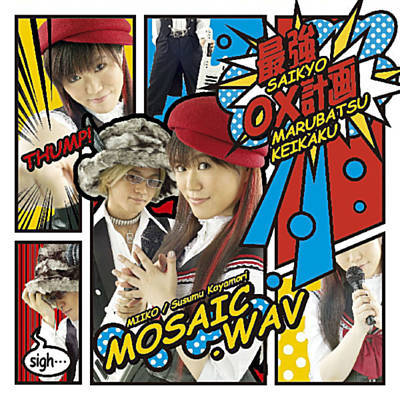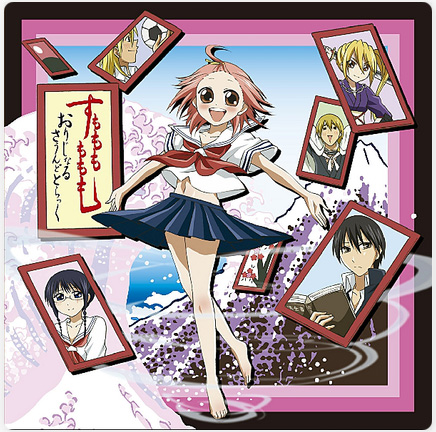
Moe moe music! In this article we’d like to welcome you to the depths of underground otaku subculture with a brief introduction to denpa music through one of its most popular groups, MOSAIC.WAV, and a little bit about the band’s signature style and contributions to anime.
Denpa Origins - What is Akiba-Pop?
Contrary to what you might think, the term denpa has a dark history. The term literally means "electromagnetic wave" and came into common usage by the 90s in Japan after being publicized by the perpetrator of the Fukagawa Street Murders in 1981 who claimed to hear denpa waves telling him to kill people. In the context of music and literature of the time, denpa was used to describe works and people that were creepy, incompressible, or otherwise delusional, and became heavily associated with otaku who were similarly “hypnotized” by the music.
While still keeping its nonsensical and over-the-top nature, modern denpa music has gravitated towards the moe end of the otaku spectrum. While possibly not a true genre, denpa music, in general, is characterized by intentionally awkward strangeness, otaku themes drawing largely from anime, manga, and games; and catchy, hyper-cute lyrics (though not all denpa is happy or lighthearted). Some other common denpa music traits are high-pitched, off-tune singing, wotagei cheers, and chiptune/bitpop instrumentation.
Above all, denpa is underground music that caters to niche audiences. MOSAIC.WAV popularized the term Akiba-Pop (or A-Pop) to describe their style, setting it apart from J-Pop since their music specifically is for the Akihabara audience, not the mainstream.
Magical Hacker(s) - Who is MOSAIC.WAV?
MOSAIC.WAV is composed of singer MI~KO and keyboardist Susumu Kayamori, along with frequent support from Masaya Koike on guitar. The group was originally known as simply “MOSAIC” with the “.WAV” added later to avoid confusion with another group. The name is a reference to the pixelation effect frequently used for censorship in Japanese pornography and the .wav (Waveform) audio file format.
Before becoming independent artists, they got their start producing music for eroge games, starting with Itadaki Jangarian in 2000, and have continued doing so on top of their activities as a band and for anime (more on that shortly). MI~KO has also voiced many characters in visual novels. MOSAIC.WAV’s first release was the single "Magical Hacker☆Kurukuru Risk" in 2004 which was followed by their album We Love "AKIBA-POP"!! the same year. They have remained active since then, producing a huge number of songs, and have also had a few live performances. They are also involved with otaku meetup events like Comiket where they sell limited edition goods.
Superluminal Style - MOSAIC.WAV’s Sound
One thing that is interesting about MOSAIC.WAV’s style is how they theme their songs around original characters and stories like Falsie the Pseudo-Science girl and Akibattler Myuu which adds to the charm and memorability of their music. Many of their songs are themed around various aspects of otaku culture like anime and games; sometimes quite specific, like collecting figurines from gachapon in "Gacha Gacha CUTE Figu@mate", as well as things like science, technology, and outer space, like their album SPACE AKIBA-POP. Vocally, they are very much rooted in denpa style with emphasis on moe sound with strange lyrics.
In terms of instrumentation, Susumu Kayamori’s work makes heavy use of a variety of well-known 80’s and 90’s synthesizers like Korg M1 and Roland D-50, along with instruments derived from game consoles like Famicom-esque pulsewaves. This gives MOSAIC.WAV’s songs a nostalgic feeling, adding to their catchiness, especially for fans of chiptune or older electronic music. Masaya Koike’s famous guitar also feels familiar with its anisong style. The group sometimes also incorporates big band, brassy instrumentation like in their song "Stress Free Style". In 2009, they collaborated with Kamo Tsuruta on a Hatsune Miku vocaloid album called Heartsnative.
Astronomical Anisong - MOSAIC.WAV & Anime
While not their main focus, MOSAIC.WAV has had some contributions to anime. The group did the arrangement for many image songs for Kami nomi zo Shiru Sekai (The World God Only Knows) as well as Yozakura Quartet: Hana no Uta, an insert song for Danganronpa: The Animation, and theme songs for Kyouran Kazoku Nikki (OP), Potemayo (OP), Mamotte! Lollipop (ED), Sumomomo Momomo: Chijou Saikyou no Yome (both OPs), and Kimihagu (ED).
MOSAIC.WAV’s most famous anime-related works are the soundtrack for the post-apocalyptic slice-of-life anime Gakkougurashi! (School-Live!) and their involvement in ufotable’s bizarre OVA adaptation of Yuri Seijin Naoko-san (“Lesbian Citizen Naoko-san”) for which the band provided the opening and ending themes as well as the background music. Kayamori has stated before that he thought that Yuri Seijin Naoko-san’s opening was his favorite song he’s worked on lyrically because he thought the message was very relevant in the modern era.
Final Notes

We hope you enjoyed this dive into a fairly obscure facet of underground otaku culture and one of the most interesting groups to come out of it. If you’re interested in learning more about MOSAIC.WAV’s music, you can actually listen to many of their tracks on their official SoundCloud (https://soundcloud.com/mosaicwav) and keep up with events on their website: http://www.mosaicwav.com/.
As always, please leave us a comment below if you liked this article and look forward to future musings on otaku culture and anime. さようなら!

